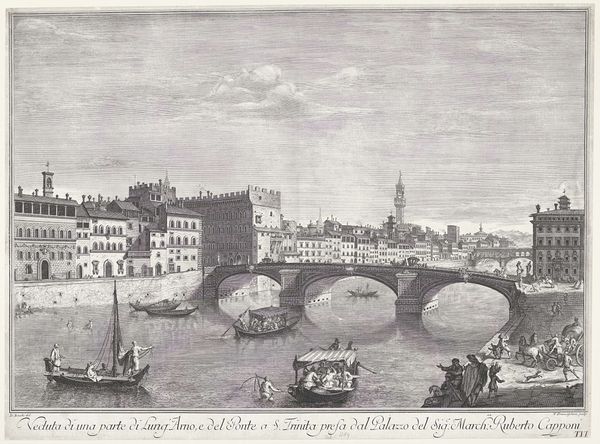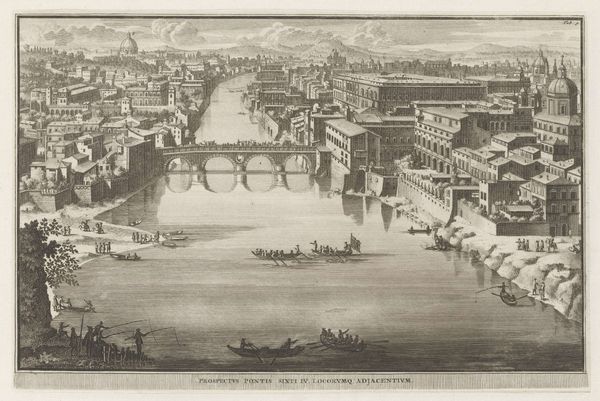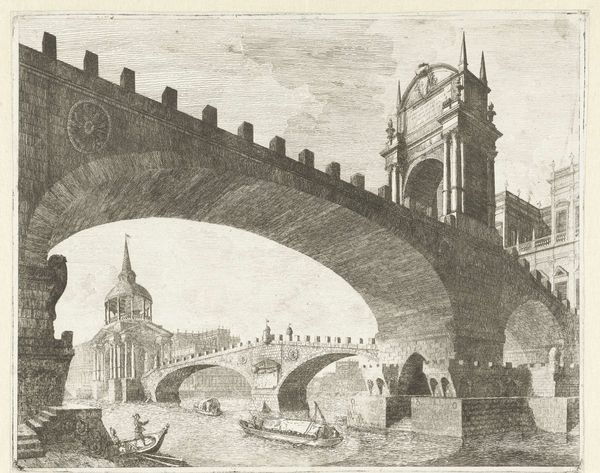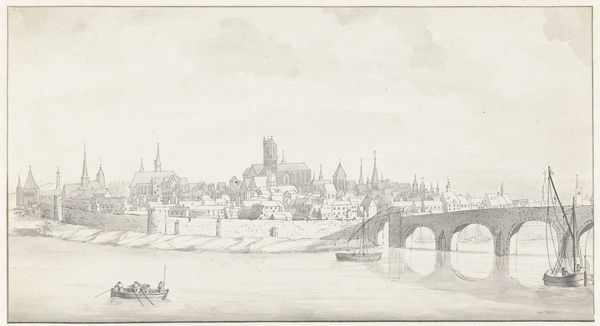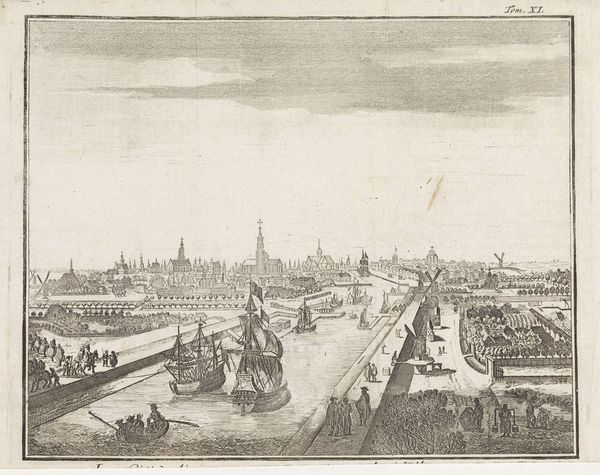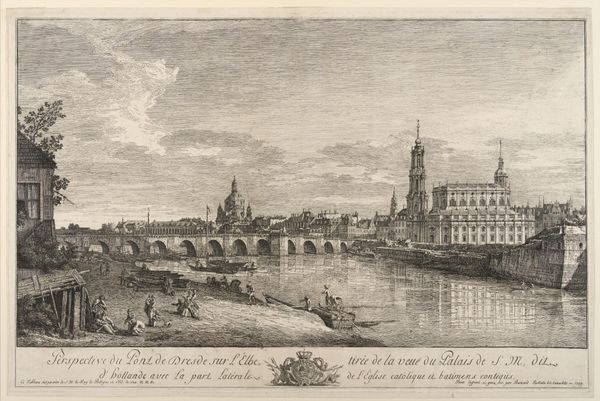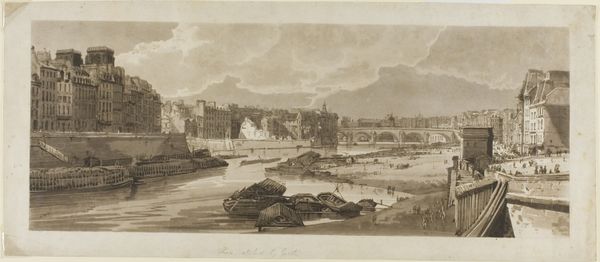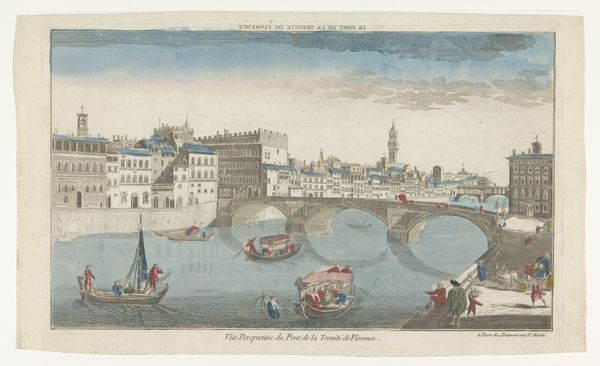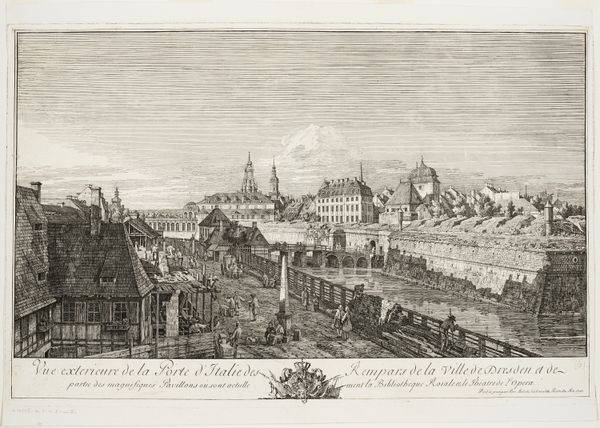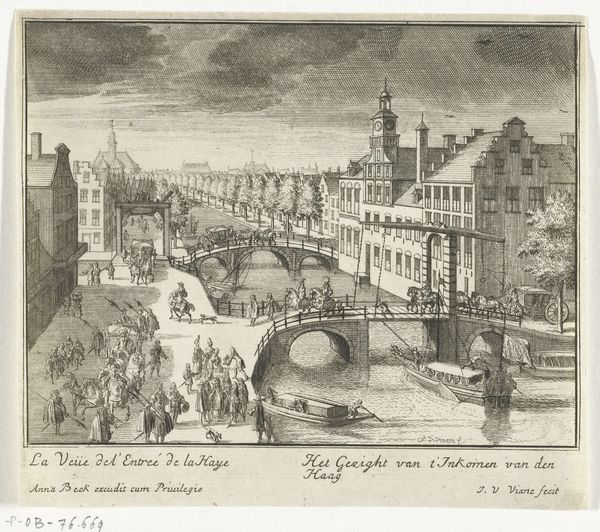
print, etching, engraving
#
baroque
# print
#
etching
#
pencil sketch
#
old engraving style
#
landscape
#
cityscape
#
engraving
Dimensions: height 163 mm, width 199 mm
Copyright: Rijks Museum: Open Domain
Editor: Here we have "Gezicht op Isola di S. Bartolomeo te Rome," a cityscape view of Rome, created between 1675 and 1711. It’s an engraving, etching, and print – a mix of reproductive technologies, really. It almost feels like a bird’s eye view. What stands out to you? Curator: I'm immediately drawn to the labor embedded within this image. The combination of etching and engraving suggests a deliberate, time-intensive production. Consider the material reality: the copper plate, the tools used to incise the lines, the very act of transferring this image for mass consumption. This isn't just about depicting Rome; it's about the means of *making* Rome accessible. Editor: That's a really interesting way to look at it. I was focused on the artistic skill, but I see what you mean. All those fine lines, creating detail through manual, reproductive work. Curator: Exactly! Think about the social context: who was commissioning these prints, who was buying them, and how did this affect the perception and experience of Rome for those who may never visit? It's a form of visual commodification, if you will. How does the material nature of the print affect our relationship with the represented cityscape? Editor: So, instead of just appreciating it as art, you’re making me think about the printmaking industry and its role in distributing images…like a Baroque postcard! Did these prints democratize art? Curator: Democratize is perhaps too strong a word, but it certainly made visual representations more available beyond the elite circles that would have been the sole patrons of painting previously. But think about the skill needed to create a plate in the first place. Not just anyone can get involved. The production itself can be considered a specialized skilled form of craft labour. It’s less about ‘high art’ and more a process of laborious skill that requires acknowledgement when we talk about an image like this. Editor: I see your point. I’m definitely leaving here thinking differently about prints! Curator: And that's the materialist perspective! Considering the "how" alongside the "what" enriches our understanding.
Comments
No comments
Be the first to comment and join the conversation on the ultimate creative platform.


